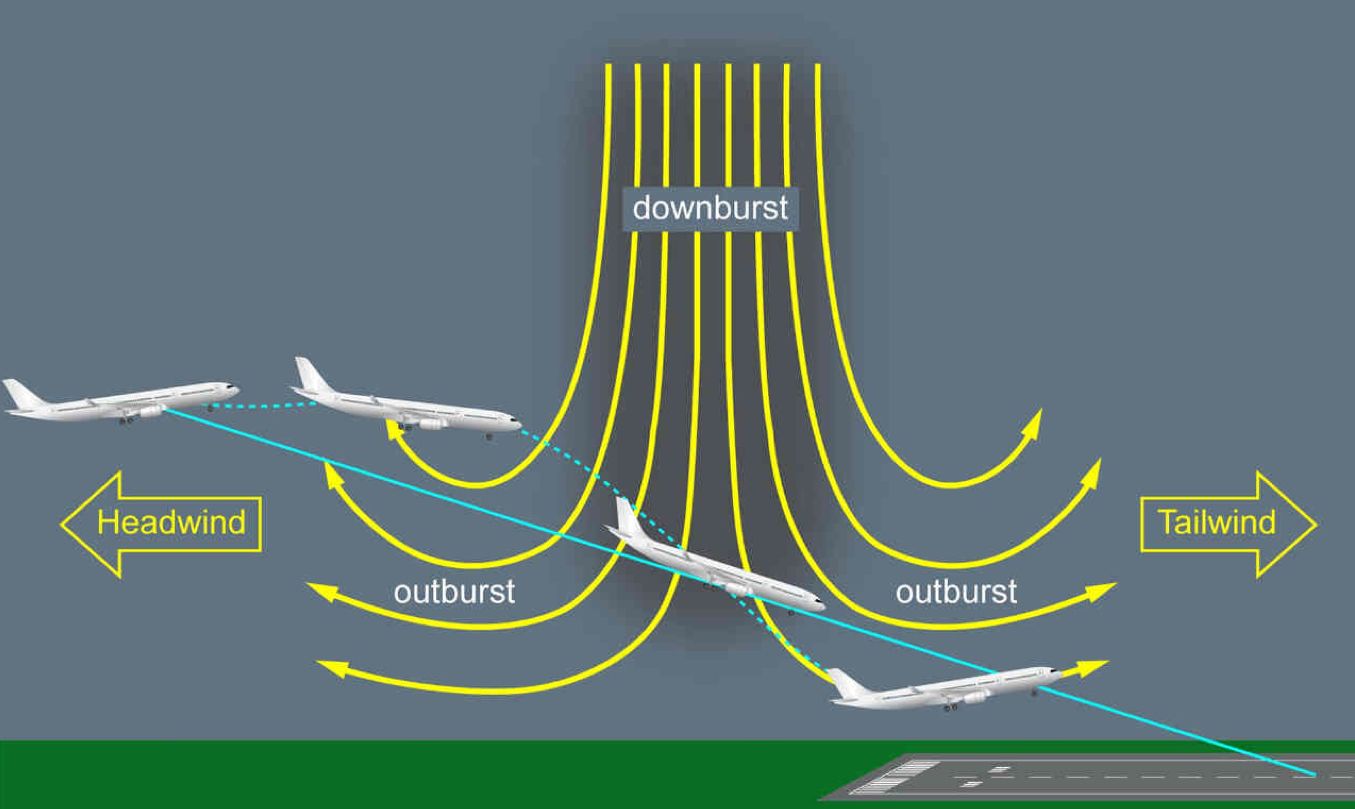Delta Flight 191 and Microbursts
Delta Flight 191 and Microbursts
On August 2, 1985, Delta Air Lines Flight 191 was flying from Ft. Lauderdale to Los Angeles with a stop in Dallas/Ft. Worth. As they approached Dallas/Ft. Worth, the crew experienced inclement weather causing them to crash short of the airport and killing 137 people. Following an investigation by the NTSB, pilot error was deemed the cause of the crash. (Finlay, 2022) The NTSB report determined,
The flight crew's decision to initiate and continue the approach into a cumulonimbus cloud which they observed to contain visible lightning; the lack of specific guidelines, procedures, and training for avoiding and escaping from low-level wind shear; and the lack of definitive, real-time wind shear hazard information. This resulted in the aircraft's encounter at low altitude with a microburst-induced, severe wind shear from a rapidly developing thunderstorm located on the final approach course.
Microbursts are a severe weather phenomenon that can impact aircraft during takeoffs and landings. They’re more dangerous on landings as the aircraft is in a high drag configuration with lower engine power. A microburst can be broken down into three different stages: The first is an increase in headwind. This causes an increase in lift causing the aircraft to climb above the approach glide angle, which in turn could cause a normal pilot to reduce power to correct the angle. Then, the aircraft enters the middle of the microburst, where there is a strong downdraft that causes a decrease in airspeed and increase in decent rate of the aircraft. The last stage is high tailwinds. The tailwind causes the airspeed to decrease and a decrease in the aircraft’s performance, making it descend until it impacts the ground. (Maaz, 2022)
I chose this blog because in my opinion, it seems it could almost have been avoided. Back in the 1975, meteorologist Tetsuya "Ted" Fujita had suspected microbursts were the cause of a particular aircraft accident but would not get more support in the idea until 1977. The National Science Foundation provided support for Fujita to conduct the Northern Illinois Meteorologist Research on Downburst (NIMROD) project in collaboration with the National Center for Atmospheric Research (NCAR). A year later, NCAR conducted many field experiments using three Doppler radars and other equipment. NCAR recommended Doppler because they found it effective in observing the air motions within the storms. By the end of the project, about 50 microbursts had been detected. (NSF, n.d.)
After flight 191, and many years prior of data collection and analyses about wind shear, the FAA and international aviation authorities developed radar-warning systems for detecting wind shear threats and to create training programs for pilots. The FAA’s Terminal Doppler Weather Radar was installed at major airports nationwide, and pilots are required to be trained on microburst and wind shear in flight simulators (NSF, n.d.) I get that hindsight is 20/20, but the facts from Mr. Fujita were there and present in some capacity. Unfortunately, it took the crash of Flight 191 for any real change to prevent any more accidents to be caused by this phenomenon.
References:
Discovery of Microbursts Leads to Safer Air Travel. (n.d.). NSF - National Science Foundation. https://beta.nsf.gov/news/discovery-microbursts-leads-safer-air-travel#:~:text=Before%20the%20introduction%20of%20Doppler,resulting%20in%20over%20500%20deaths
Finlay, M. (2022, August 2). 37 years ago today: The crash of delta air lines flight 191. Simple Flying. https://simpleflying.com/delta-air-lines-flight-191-anniversary/
Maaz, M. A. (2022, July 8). Microbursts - the most dangerous wind shear a pilot can face. Simple Flying. https://simpleflying.com/microburst-pilot-wind-shear/
Ranter, H. (1985, August 2). ASN aircraft accident Lockheed L-1011 Tristar 1 N726DA Dallas/Fort Worth International Airport, TX (DFW). Aviation Safety Network. https://aviation-safety.net/database/record.php?id=19850802-0
Smithsonian Channel Aviation Nation. (2014, April 8). This Is Why You Don’t Want to Fly into a Microburst [Video]. YouTube. https://www.youtube.com/watch?v=HDfodeURad0

Comments
Post a Comment